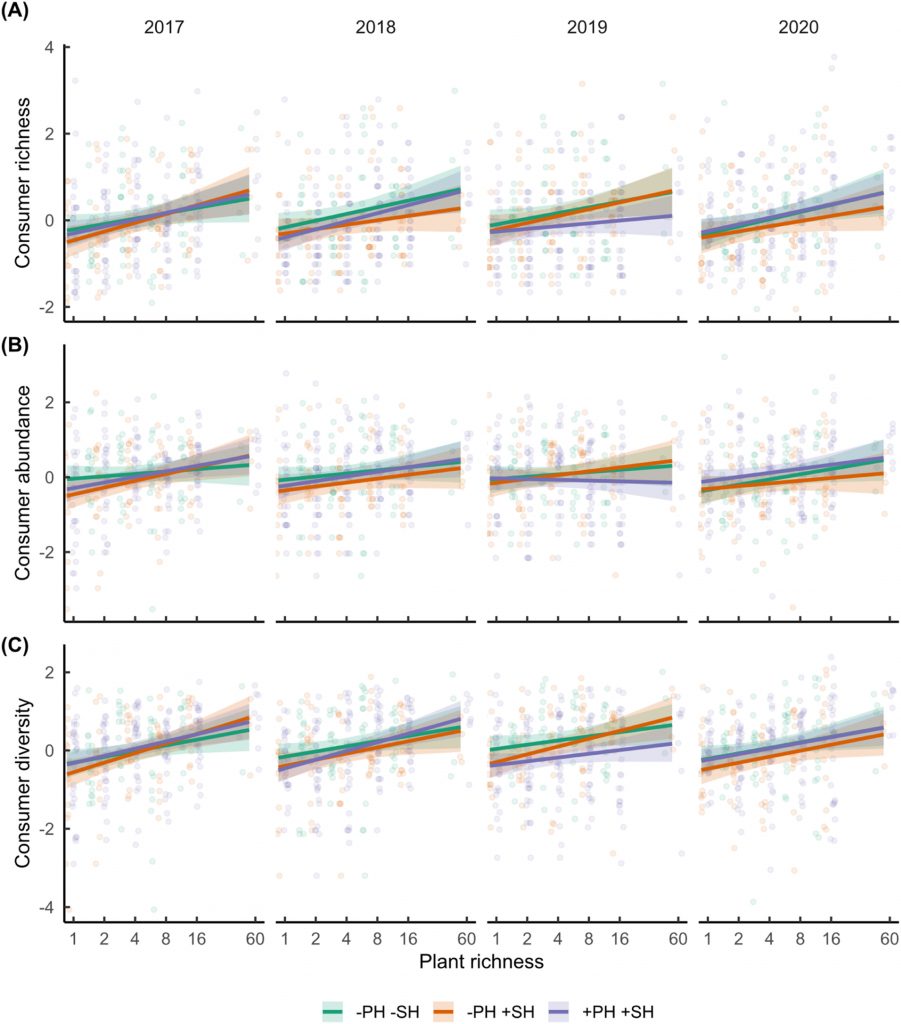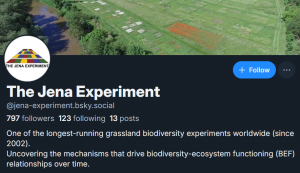New publication from Bröcher et al. in Basic and Applied Ecology: The positive plant diversity/consumer relationship is independent of grassland age
Plant diversity is an important driver of many ecosystem processes within and among trophic levels. There is growing evidence that the strength of plant diversity effects depends on the biotic and abiotic environmental conditions. Plant and soil history may be underlying mechanisms of an observed strengthening of biodiversity effects in aging biodiversity experiments. Temporal changes in biodiversity-ecosystem functioning (BEF) relationships have been observed primarily for plants, while dynamics of higher trophic levels are little studied. However, similar patterns can be expected for higher trophic levels because of the close links between producers and consumers. Here, we compare the effects of plant diversity on consumer communities (richness, abundance, diversity, and community composition) and consumer-mediated functions (herbivory and predation) in plant communities with different plant and soil histories. Across six study years, plant diversity had a positive effect on consumer richness, abundance, diversity, and herbivory, whereas the level of predation was not significantly affected by plant diversity. Furthermore, consumer community composition shifted significantly with increasing diversity of plant communities. In addition, consumer abundance, composition, and consumer functions (herbivory and predation) differed between plant communities of different histories. However, contrary to our expectations, plant and soil history caused no significant change in the effects of plant diversity on consumer communities and functions, indicating that these history effects do not provide a mechanistic explanation for plant diversity effects on aboveground invertebrate communities. Thus, our results suggest that plant diversity is a major driver of aboveground invertebrate communities and functions across grassland ages and should be maximized to protect and restore multitrophic biodiversity.

Reference:
Bröcher, M., S. T. Meyer, N. Eisenhauer, and A. Ebeling. 2024. The positive plant diversity/consumer relationship is independent of grassland age. Basic and Applied Ecology 76:58–68. https://doi.org/10.1016/j.baae.2024.02.006.



